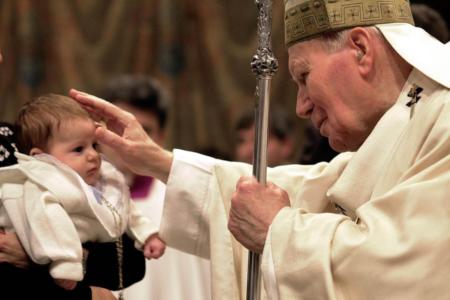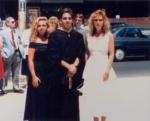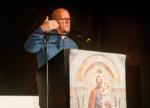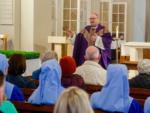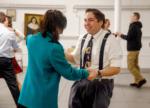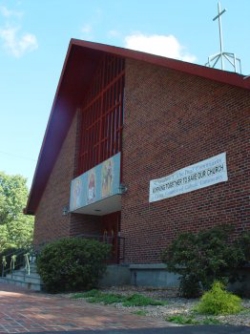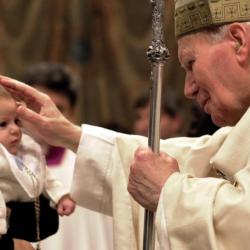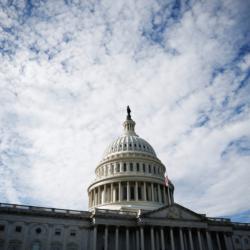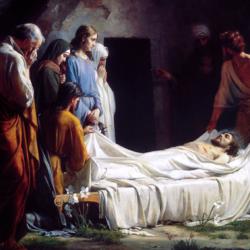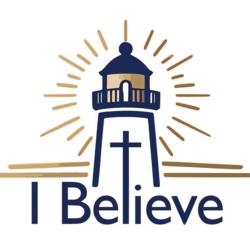Church in vigil receives new status
BRIGHTON — Just over a year after reopening St. Anselm Church in Sudbury as a chapel of a Framingham parish, Cardinal Seán P. O’Malley has taken the additional step of establishing the church as the only rectorate in the archdiocese.
Rectorates differ from parishes in that they have no territory. St. Anselm’s former territory has been divided between Our Lady of Fatima Parish in Sudbury and St. George Parish in Framingham.
The St. Anselm Community will include former members of St. Anselm Parish who live in the parish’s former territory, families who worship regularly at the church, and those who were members of the parish and have moved out of the territory.
The decree, effective June 3, states that the church building, rectory and property belong to the Archdiocese of Boston and will be administered by a rector. The decree also states it only valid until the Vatican rules on an appeal of suppression of St. Anselm’s Parish.
Like a pastor or parish administrator, the rector will administer the sacraments of baptism, Eucharist, confirmation, marriage and anointing of the sick for community members as well as perform funerals. The rector can also establish religious education, first Communion and Rite of Christian Initiation of Adults programs for members of the community and must establish a finance and a pastoral council.
Tufts University chaplain Father David M. O’Leary has been named rector of St. Anslem’s and will also continue his work at the university.
“I pray that you will have a zealous and fruitful ministry in your new appointment as rector at St. Anselm Church. May God bless you in all your endeavors,” the cardinal wrote in Father O’Leary’s appointment letter.
After St. Anselm Parish was closed on Sept. 15, 2004, a group of former parishioners began a 24-hour vigil, the second in response to reconfiguration in the archdiocese.
On March 31, 2005 Cardinal O’Malley announced that he had accepted all the recommendations of the Reconfiguration Review Committee, which he appointed in October 2004 to review the reconfiguration process. The committee’s recommendations included reopening one parish and modifying the status of three others, including St. Anselm’s, which became a chapel of St. George Parish in Framingham.
Though former St. Anselm’s parishioners gathered for an evening of prayer, song and discussion in reaction to the decision, several also vowed to continue the vigil until all lingering concerns were resolved.
The archdiocese announced on Jan. 14 this year that the Vatican’s Congregation for the Clergy announced that it would not intervene in the cases of 10 parish closures. The congregation had previously denied another appeal.
Members of eight of those former parishes, including St. Anselm’s, took their cases to the next, and highest, level of appeal available: the Apostolic Signatura. All eight former parishes are represented on the Council of Parishes, a lay group formed in response to parish closures.
This pending recourse necessitated that the decree establishing the St. Anselm Community as a rectorate be contingent on the appeal’s outcome, according to Father Mark O’Connell, assistant for canonical affairs of the archdiocese.
“It’s temporary so that we can respect their recourse in Rome,” he said. “We have fully respected that since the beginning.”
Jack Ryan, a spokesman for St. Anselm’s, agreed.
“Because of the pendency of the appeal, it was difficult, under Canon Law, to make the decree permanent,” he said. “We expect to receive a letter from the cardinal stating that it is his intention that even if the appeal is denied, the rectorate at St. Anselm would continue.”
Ryan said the decree is a result of months of discussions with Cardinal O’Malley and if such a letter were issued it could lead to the end of the community’s 20-month vigil.
So far the reaction from St. Anselm Community members has been “very good” and the decree provided the “fully functioning church” they were hoping for with religious education, baptisms, weddings, funerals and pastoral and finance councils, he added.
Council of Parishes’ co-founder Peter Borre noted that the process at St. Anselm’s may be an option for other closed parishes.
“St. Anselm’s will have the status of somewhere between a parish, which it will not be, and a chapel, which it will not be,” he said. “This may be a model for other parishes in vigil.”
<
